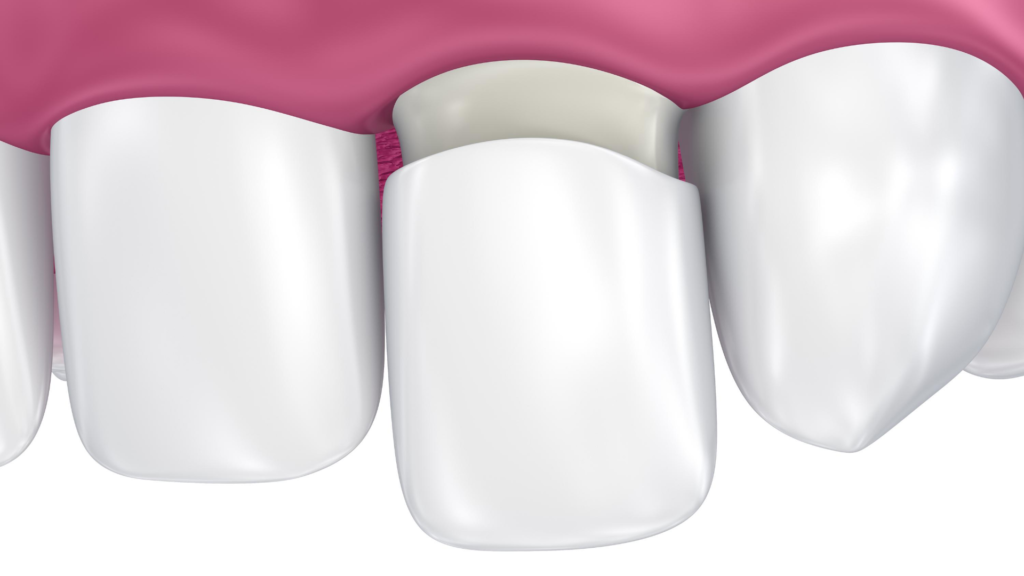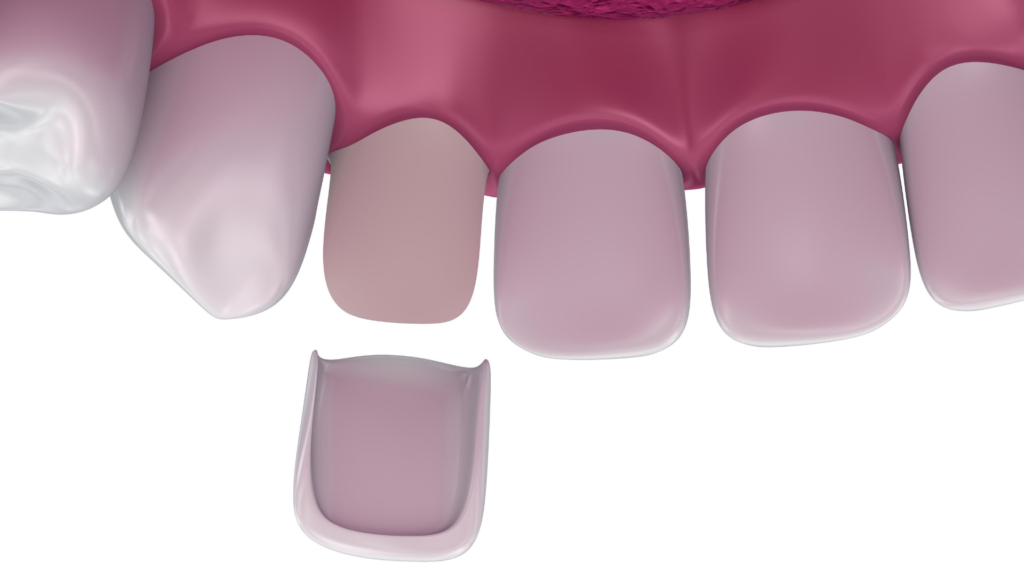Have you ever wondered how a celebrity’s smile goes from zero to hero so quickly? The short and simple answer is most likely veneers. Good news is that these are available for everyone, and can make a huge impact on your confidence and appearance. There are many types of veneers, but the two most common are porcelain veneers and composite veneers. These differ in the material that the veneer is made out of, and the time that it takes for the final result.

What are veneers?
Veneers are a thin covering that is adhered to the outside (visible) surface of your tooth. When I say thin, I mean THIN. The average veneer is around 0.5 mm in thickness, enough for the material to still be strong but at the same time have the properties to translate to a beautiful smile. As mentioned before, there are two main types of veneers, porcelain and composite. A porcelain veneer is fabricated outside of the dental office within a dental lab, which means that they normally take 2-3 visits in order to complete. A composite veneer is able to be placed chairside by the dentist during the same visit. Each of these materials go through a process called bonding, in which they are chemically adhered to your natural tooth surface. Both are great options, but each have their pros and cons. Porcelain veneers are known for their beauty, but tend to be a bit more expensive. Composite veneers can also look beautiful, but depend greatly on the technical skills of the dentist. Once each material is bonded to the tooth, they are incredibly strong but precautions should be taken in order to protect the materials. For example, a dentist will most likely tell their patients with veneers to not bite into anything hard with their front teeth, and to wear a night guard when they are sleeping.
What are veneers used for?

Veneers are normally for patients with discolored teeth, misshapen teeth, or gaps in between their teeth. As the picture shows above, the dentist will reduce a small amount of your tooth in order to make ample room for the porcelain or composite material. This will make certain that your teeth do not look too bulky once the veneer is placed. Also, as you can see, the veneer does not cover the inside part of your tooth, only the part that can be seen when smiling. Dentists typically utilize the 2-4-6-8 rule for placing veneers, meaning that they will most likely place either 2, 4, 6, or 8 veneers for symmetrical purposes.
How long do veneers last for?
Porcelain veneers typically last for about 10-15 years, but depend greatly on the upkeep by the patient. Any time a veneer is in a mouth, it requires great hygiene with brushing and flossing, and the resistance of biting into hard things like hard shell tacos or apples. Composite veneers tend to not last as long as porcelain veneers because they are more prone to chipping. They normally last around 8 years but can last much longer.
Are veneers a good option?
If your teeth are crooked, discolored, or have gaps, veneers will always be an option. They provide a quicker path to a beautiful smile when compared to other avenues such as braces. If you know that you grind at night, or if your dentist has informed you that you do so, the dentist may be more cautious to place the veneers because grinding may damage the material. However, most doctors will strongly advise their patients to wear a mouth guard at night to prevent this from happening.


Comments are closed